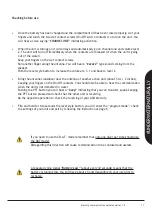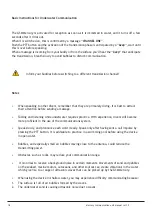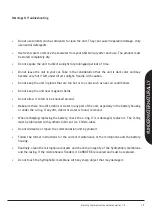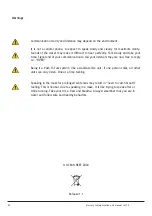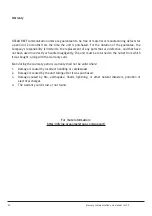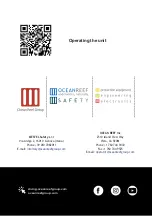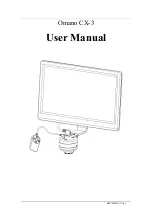
Mercury communication unit manual rel.1.2
18
•
When speaking to other divers, remember that they are primarely diving. It is best to attract
their attention before sending a message.
•
Talking and listening while underwater requires practice. With experience, divers will become
more proficient in the use of the communications system.
•
Speak slowly, and pronounce each word clearly. Speak only after having sent a call impulse by
pressing the PTT button. It is advisable to practice in a swimming pool before using the device
in open water.
•
Bubbles, and especially small air bubbles moving close to the antenna, could reduce the
transmitting power.
•
Obstacles, such as rocks, may reduce your communication range.
•
It is normal to receive a background noise in certain moments. Movements of sand and pebbles
on the seabed, marine motors, cetaceans, and other sources can create vibrations in the water
which give rise to a range of ultrasonic waves that can be picked up by the GSM Mercury.
•
When using the device in shallow water, you may experience difficulty communicating because:
1. The surface is full of air bubbles formed by the waves.
2. The underwater sand is causing ultrasonic noise due to waves.
Basic Instructions for Underwater Communication
Inform your buddies before switching to a different transmission channel!
Notes
The GSM Mercury is activated for reception as soon as it is immersed in water, and it turns off a few
seconds after it dries out.
When it is switched on, this is confirmed by a message
“CHANNEL ONE”
.
Push the PTT button and the activation of the transmission phase is anticipated by a
“beep”
, wait until
this is over before speaking.
When a message is incoming from your buddy or from the surface you’ll hear the
“beep”
that anticipate
the transmission, breath slowly to avoid bubbles to disturb communication.
Summary of Contents for GSM Mercury
Page 1: ......
Page 2: ......
Page 23: ...Mercury communication unit manual rel 1 2 23 UNDERWATERNATURALLY...














